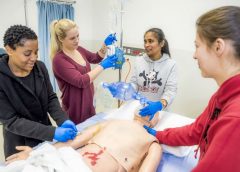By Erin Fazzari, MPT, CLT, CWS, DWC
Have you seen legs like those shown in the images below in your practice? These images show lymphedema and venous stasis ulcers, illustrating the importance of collaboration between clinicians in two disciplines: lymphedema and wound care. (more…)
Read More

